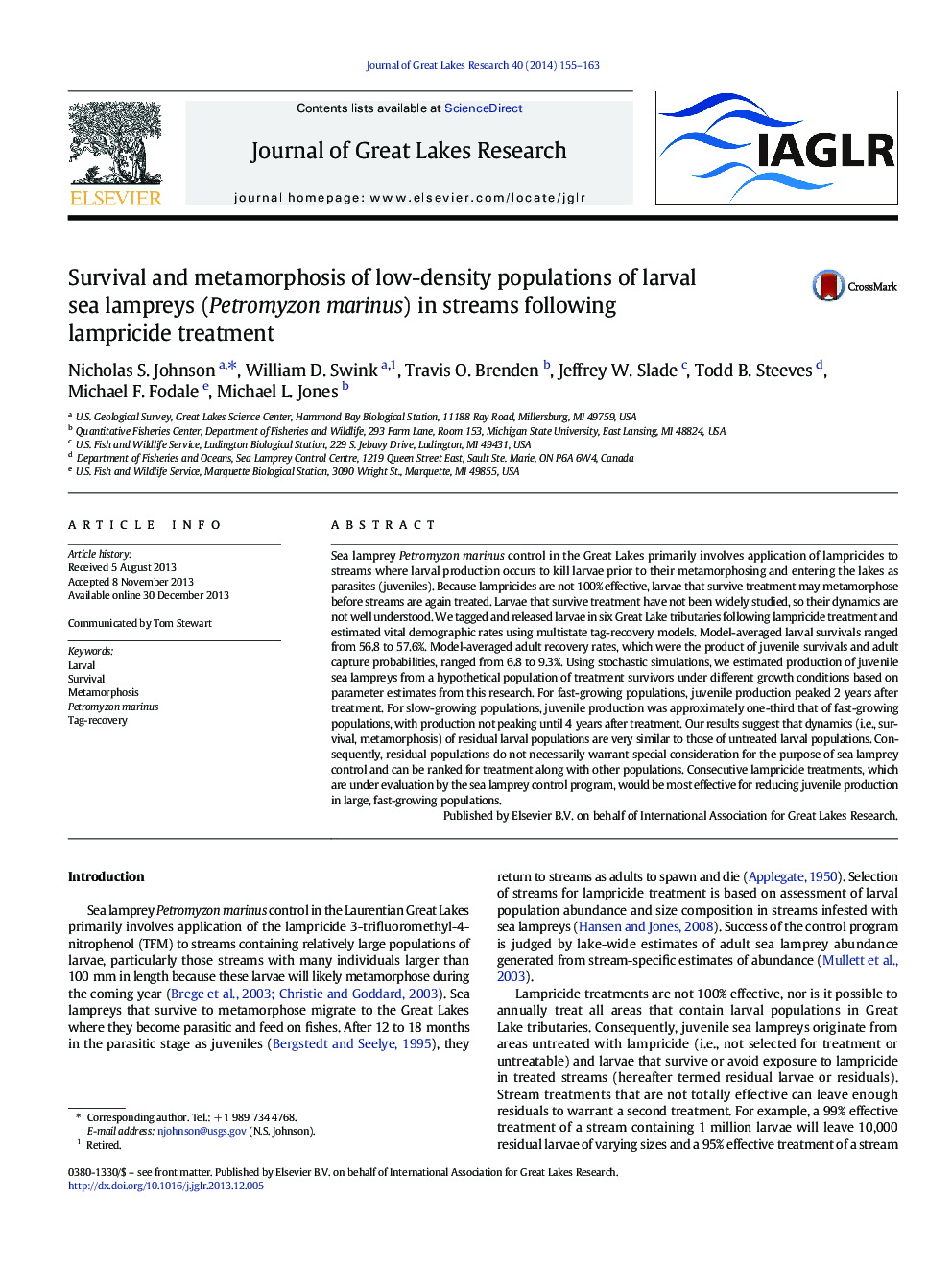| کد مقاله | کد نشریه | سال انتشار | مقاله انگلیسی | نسخه تمام متن |
|---|---|---|---|---|
| 6305372 | 1306685 | 2014 | 9 صفحه PDF | دانلود رایگان |
عنوان انگلیسی مقاله ISI
Survival and metamorphosis of low-density populations of larval sea lampreys (Petromyzon marinus) in streams following lampricide treatment
دانلود مقاله + سفارش ترجمه
دانلود مقاله ISI انگلیسی
رایگان برای ایرانیان
کلمات کلیدی
موضوعات مرتبط
مهندسی و علوم پایه
علوم زمین و سیارات
علوم زمین و سیاره ای (عمومی)
پیش نمایش صفحه اول مقاله

چکیده انگلیسی
Sea lamprey Petromyzon marinus control in the Great Lakes primarily involves application of lampricides to streams where larval production occurs to kill larvae prior to their metamorphosing and entering the lakes as parasites (juveniles). Because lampricides are not 100% effective, larvae that survive treatment may metamorphose before streams are again treated. Larvae that survive treatment have not been widely studied, so their dynamics are not well understood. We tagged and released larvae in six Great Lake tributaries following lampricide treatment and estimated vital demographic rates using multistate tag-recovery models. Model-averaged larval survivals ranged from 56.8 to 57.6%. Model-averaged adult recovery rates, which were the product of juvenile survivals and adult capture probabilities, ranged from 6.8 to 9.3%. Using stochastic simulations, we estimated production of juvenile sea lampreys from a hypothetical population of treatment survivors under different growth conditions based on parameter estimates from this research. For fast-growing populations, juvenile production peaked 2Â years after treatment. For slow-growing populations, juvenile production was approximately one-third that of fast-growing populations, with production not peaking until 4Â years after treatment. Our results suggest that dynamics (i.e., survival, metamorphosis) of residual larval populations are very similar to those of untreated larval populations. Consequently, residual populations do not necessarily warrant special consideration for the purpose of sea lamprey control and can be ranked for treatment along with other populations. Consecutive lampricide treatments, which are under evaluation by the sea lamprey control program, would be most effective for reducing juvenile production in large, fast-growing populations.
ناشر
Database: Elsevier - ScienceDirect (ساینس دایرکت)
Journal: Journal of Great Lakes Research - Volume 40, Issue 1, March 2014, Pages 155-163
Journal: Journal of Great Lakes Research - Volume 40, Issue 1, March 2014, Pages 155-163
نویسندگان
Nicholas S. Johnson, William D. Swink, Travis O. Brenden, Jeffrey W. Slade, Todd B. Steeves, Michael F. Fodale, Michael L. Jones,